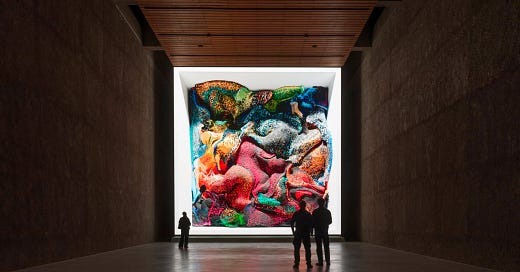After three decades evolving with technology in design, this moment feels different. While previous advances expanded our productive capability, generative technologies seem to be opening questions about where design can go next.
Think about how we’ve traditionally approached design problems. We’ve been really good at taking complex information and making it meaningful. Paul Rand called it "adding value and meaning, illuminating, simplifying, clarifying." Since the industrial revolution, we’ve been the bridge between raw information and human understanding. Turning "prose into poetry", Rand called it.
Unlike times past, something else is going on. With massively available data and generative AI, we find ourselves in a position to create new knowledge together with our clients and users. This moment brings a deeper transformation than in times past. It changes our participation in the collective process of discovery, understanding, and knowledge formation.
Cognitive science shows us that knowledge isn’t just discovered or understood—it’s actively constructed through interaction, pattern recognition, and the formation of new mental models. When we work with generative systems, every interaction becomes an opportunity to provoke thinking, guide exploration, synthesize insights, and form new understanding. We’re not just organizing or presenting information. We’re designing spaces where people can analyze, evaluate, and create new knowledge together.
Let me illustrate this transformation through a recent experience in my teaching that reveals both the promise and the pitfalls of generative technology. Last semester, several students responded to a month-long branding assignment by turning to Midjourney. Within a week, they had produced complete sets of visually seductive, technically polished work. But something important was missing: the process of discovery and understanding.
In bypassing the recursive learning that comes from iteration and reflection, these students couldn’t see that their work, while formally appealing, lacked depth. They couldn’t evolve the work because they hadn’t built the mental models that emerge through the design process. This wasn’t a failure of the tool, but rather a misunderstanding of its potential role in knowledge creation.
Contrast this with artist Refik Anadol’s vision when he says, "I’m trying to find the language of humanity. And I do believe that this language is a representation of all our collective memories that can turn to collective dreams and eventually collective consciousness." Here, generative technologies become not just tools for production, but partners in exploring and contributing to the human collective experience. This is how profound a shift we’re witnessing—from using AI to shortcuts outputs, to engaging with it in ways that expand our collective capacity for understanding and meaning-making.
Plato talked about how behind every physical thing, there’s a perfect, abstract form. In today’s world, this concept takes on new meaning. When we work with generative systems, we’re not just creating fixed designs—we’re creating systems of possibility, frameworks that can generate endless variations while maintaining their essential truth.
As I see it, the new purpose of design is to expand human imagination. Our role evolves to creating new ways of understanding and engaging with the world.
This is why design education and practice need to evolve. We need to develop frameworks that help extract real value from technology, with human needs, ingenuity, and values at the center.
The future of design is no longer in building solutions . It’s in creating spaces where knowledge leads to infinite outcomes that genuinely enrich human experience and understanding.






Bravo! Finally the conversation becomes about possibilities and not just annihilation by robots.
Big hug
Right... as creative directors, we asked our team for ideas. Now we can ask AI the same way. But the attitude is still kind of the same. You have to ask well: give context, show references, BRING FIRST IDEAS. And the most important thing: GIVE FEEDBACK.
If you treat AI like a creative partner, the process can still be rich, like working with a real team.
We'll just miss the human part, the coffee breaks, the laughs we used to have. And most of all THE FRIENDS WE MADE :)
Saludos!!!! Diego, Cristiano...